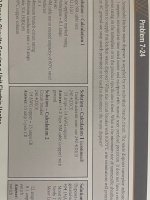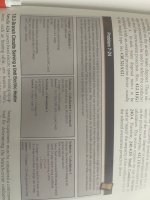Jpflex
Electrician big leagues
- Location
- Victorville
- Occupation
- Electrician commercial and residential
I assume at this point that if an appliance is also a motor such as: a kitchen water disposal motor rated in horsepower over 1/8 hp or air compressor rated in HP, then perhaps you would not size the OCPD and conductor according to the NEC motor article unless their is lack of nameplate or info?
According to the NEC appliance article, appliances are not to exceed their nameplate OCPD rating if the value is listed on their nameplate.
otherwise you follow the 20 ampere max OCPD rule for general appliance running at 13.33 amperes or less or 150% of appliances rated running current if listed over 13.33 amperes
It seems NEC calculation books are not following rules in NEC article pertaining to motors even when appliances are motors
So this confuses me on when to interpret a motor appliance as a motor and follow their corresponding distinctive section of rules under NEC motor article or treat the appliance (with a motor) under the appliance article section of NEC and adhere to its distinctive rules when sizing OCPD and branch circuit wiring sizes?
Here’s a test question attached
According to the NEC appliance article, appliances are not to exceed their nameplate OCPD rating if the value is listed on their nameplate.
otherwise you follow the 20 ampere max OCPD rule for general appliance running at 13.33 amperes or less or 150% of appliances rated running current if listed over 13.33 amperes
It seems NEC calculation books are not following rules in NEC article pertaining to motors even when appliances are motors
So this confuses me on when to interpret a motor appliance as a motor and follow their corresponding distinctive section of rules under NEC motor article or treat the appliance (with a motor) under the appliance article section of NEC and adhere to its distinctive rules when sizing OCPD and branch circuit wiring sizes?
Here’s a test question attached



